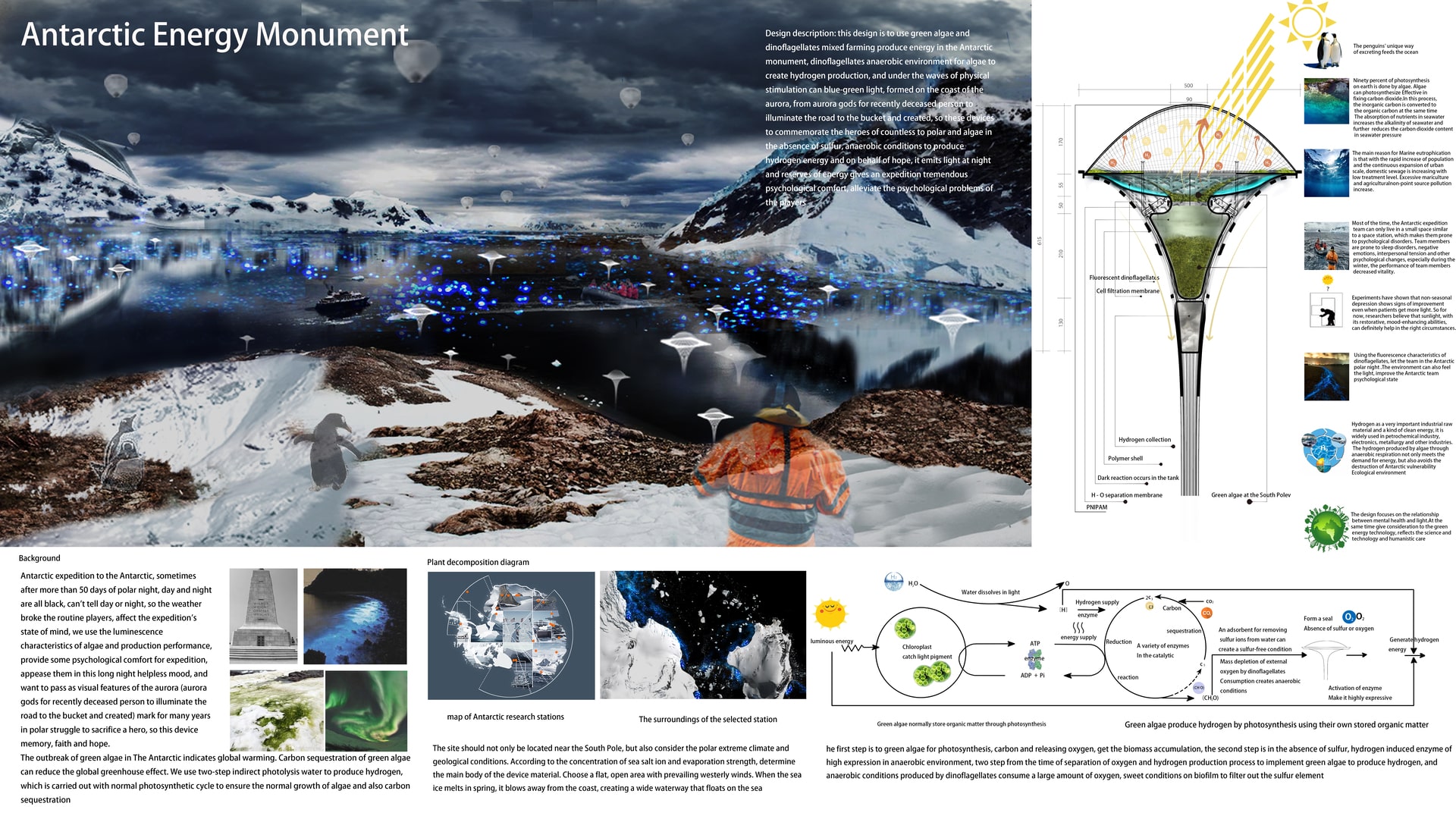Project Description
Starting in the 18th century, explorers went south in search of the fabled southern continent. This is a tragic history, countless explorers lost their lives on the way to explore Nowadays, many scientific stations have been built in the South Pole, but people still have to face the polar day and night. Facing the dark and dim sun for a long time, the physical and psychological effects of the team members are inevitable. Meanwhile, exploration activities and human industrial pollution also destroy this pure land. So, the inspiration for our team comes from the commemoration of the pioneers and the focus on building technology, green energy technology and sustainable development. I hope to find a foothold between the development of science and technology and humanistic care. Direct biological photolysis is based on the ability of algae to directly decompose water molecules into H2 and O2. Protons and electrons extracted through the water decomposition process are recombined into hydrogen molecules by a chloroplast hydrogenase, whose purity can reach 98%. Both photosynthetic green algae and cyanobacteria are the starting points for sustainable hydrogen production. However, since the reversible hydrogenase in green algae is highly sensitive to O2, the enzyme activity will be irreversibly inactivated within a short period of time. So far, the sensitivity of hydrogenase to the production of O2 in general photosynthesis has limited the possibility of green algae in the hydrogen production system. However, the disadvantages of the above methods lie in the high cost of large-scale application and the low possibility of application in production system. The first step of indirect biophotolysis is to promote the growth of photosynthetic organisms in large quantities to obtain carbohydrate-rich substances, fix CO2, provide biomass and store carbohydrates; The second step is usually to produce hydrogen by fermentation of biomass, using the storage to produce H2. Typically, algae react in sulfur-free conditions, leading to anaerobic conditions that stimulate the continuous production of H2. However, this process is not as efficient as direct biological photolysis. The four steps of indirect biophotolysis are usually as follows: (1) Photosynthesis produces biomass; (2) Biomass concentration; (3) Algal cells were fermented in aerobic darkness. Considering the special geographical location and at the South Pole surfaces at polar night environment, we introduce the dinoflagellates entire "ecosystem", "white nights" environment, dinoflagellates with algae at the South Pole for oxygen, and make it easier to implement anoxic environment, make the enzyme better express, polar night (6) environment, dinoflagellates biological nutrients of photosynthesis can be converted to light energy, improve the psychological condition of the Antarctic expedition. In order to cope with the tendency of overproduction of algae, a dark reaction fermenter was set at the bottom of the culture plate, which could generate hydrogen under the environment of polar day and night to power the research station.
